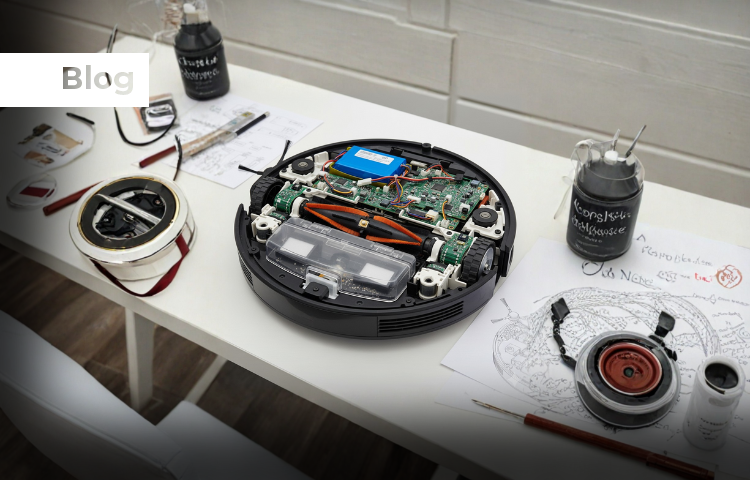Overview
This blog explores key challenges in on-board charger (OBC) design for electric vehicles, including efficiency optimization, thermal management, EMI mitigation, control loop precision, and integration constraints. As TenXer Labs engineers who built the remote lab for Allegro Microsystems’ CT455 and CT456 sensors on LiveBench, we highlight how ultra-fast, high-precision contactless sensors using XtremeSense™ TMR technology address these issues. Practical tips include leveraging high-bandwidth, low-noise sensors for PFC, ensuring thermal resilience with compact designs, and using remote testing for validation.
At TenXer Labs, we recently worked to developing remote evaluation platforms that allow designers to test cutting-edge semiconductor components under real-world conditions. One of our projects involved building the remote lab for Allegro Microsystems’ CT455 and CT456 current sensors on our LiveBench platform. These ultra-fast, high-precision, contactless sensors leverage Allegro’s proprietary XtremeSense™ TMR technology, making them particularly suited for high-reliability EV applications where fast control loop feedback is essential. Through this hands-on experience, we have gained valuable insights into the pain points of on-board charger (OBC) design. In this blog, we explore the most pressing challenges system designers face when creating OBCs for electric vehicles, focusing on how precise current sensing can address them. We will draw from practical examples and testing scenarios to provide actionable guidance for optimizing your designs.
OBCs are the unsung heroes of EV charging infrastructure. Mounted directly on the vehicle, they convert AC power from the grid (typically 120V or 240V) into DC for battery charging, handling power levels from 3.3kW to 22kW or more in modern systems. As EVs push for faster charging times and longer ranges, OBCs must deliver high efficiency while fitting into increasingly compact spaces. However, designers often grapple with trade-offs in performance, safety, and reliability. Based on industry trends and feedback from our lab users, the most sought-after problems include achieving high efficiency through precise power factor correction (PFC), ensuring stable fast control loops, managing thermal dissipation in dense layouts, maintaining galvanic isolation for safety, and delivering accurate current measurements across wide dynamic ranges.
Let’s dive into these challenges and discuss strategies to overcome them, with a spotlight on the importance of advanced current sensing.
Challenge 1: Maximizing Efficiency with Power Factor Correction (PFC)
One of the top hurdles in OBC design is boosting overall efficiency to above 95% to reduce energy losses, heat generation, and charging times. Poor efficiency not only wastes electricity but also increases thermal stress on components, shortening battery life and raising cooling costs. A key contributor to inefficiency is suboptimal PFC, where the charger draws current out of phase with the voltage, leading to harmonics that violate grid standards like IEC 61000-3-2. In multi-stage OBCs—typically an AC-DC rectifier followed by a DC-DC converter—designers must synchronize switching to achieve near-unity power factor.
Current sensing plays a pivotal role here, providing real-time feedback for the PFC stage’s control algorithms. Traditional shunt-based sensors introduce resistive losses (I²R), exacerbating efficiency drops, especially at high currents (up to 100A or more in Level 2 chargers). Moreover, their contact-based nature can add parasitic inductance, distorting waveforms. Contactless sensors, on the other hand, eliminate these losses while offering high bandwidth for capturing rapid current changes during switching cycles (often 50-200kHz).
In our lab setups, we’ve seen how sensors with 1MHz bandwidth and sub-300ns response times enable tighter control loops, allowing algorithms to adjust PWM duty cycles instantaneously. This results in smoother sinusoidal current draw, improving PFC and efficiency by 2-3%. For instance, during sweep tests on our platform, applying variable AC inputs revealed how low-noise sensing (with >-50dB common-mode rejection) filters out EMI, preventing false triggers that could degrade performance. Designers should prioritize sensors with low power consumption (under 10mW) to further enhance system efficiency, ensuring the sensing element doesn’t become a bottleneck.
Challenge 2: Ensuring Stability in Fast Control Loops
OBCs operate in dynamic environments, with grid voltage fluctuations (85-265V AC) and battery states varying from depleted to full. This demands fast, stable control loops to regulate output voltage and current, preventing overshoots that could damage batteries or cause thermal runaway. A common issue is loop instability, where delays in feedback lead to oscillations, reducing charging speed and reliability. In high-power designs, slow sensors (with response times >1μs) can’t keep up with switching transients, resulting in phase margins below 45 degrees and potential system failures.
Advanced current sensors address this by delivering ultra-fast, precise measurements for both average and instantaneous currents. TMR-based technology, for example, offers superior magnetic sensitivity, enabling detection of small field changes with minimal latency. In EV OBCs, this is crucial for the isolated DC-DC stage, where current feedback informs zero-voltage switching (ZVS) or zero-current switching (ZCS) techniques to minimize losses.
From building the remote lab, we’ve simulated transient events—like sudden load dumps—using programmable current profiles. Sensors with <300ns response times tracked references flawlessly, maintaining loop stability even at 1MHz bandwidths. This speed supports advanced digital controls, such as model predictive algorithms, which predict and correct deviations in real-time. Designers facing this challenge should evaluate sensors for their signal-to-noise ratio; low-noise performance ensures accurate readings in noisy EV environments, reducing the need for heavy filtering that could introduce delays.
Integration tip: Pair the sensor with a high-speed ADC for seamless feedback into MCUs like those from STM32 or TI’s C2000 series.
Challenge 3: Managing Thermal Dissipation in Compact Layouts
Space constraints in EVs force OBCs into tight enclosures, often near heat sources like batteries or motors. Thermal management becomes a nightmare, with hotspots leading to derating, reduced lifespan, or forced air/liquid cooling that adds weight and cost. High currents generate Joule heating in conductors, and inefficient sensing exacerbates this by requiring bulky heat sinks or larger packages.
Contactless sensors shine here due to their zero-loss operation and miniature form factors (e.g., 3x3mm QFN packages). Without physical contact, they avoid self-heating, and their high thermal resilience (operating up to 150°C) suits automotive-grade requirements. In OBC designs, embedding such sensors in current paths allows precise monitoring without adding thermal mass.
Our LiveBench thermal analysis tests, which we configured, apply continuous currents for minutes while capturing heatmaps via infrared cameras. Results show even temperature distribution, with rises under 20°C at 50A loads, thanks to efficient PCB integration. This helps designers optimize layouts—using thick copper traces for heat spreading—while meeting IP67 ingress protection.
A pro tip: Select sensors with wide supply voltage compatibility (3.3V to 5V) to align with low-power MCUs, further cutting thermal overhead.
Challenge 4: Achieving Galvanic Isolation for Safety and Compliance
Safety is non-negotiable in OBCs, which bridge the grid and high-voltage batteries (up to 800V). Galvanic isolation prevents ground loops and protects against faults, but traditional opto-isolated or transformer-based sensing adds complexity, size, and cost. Insufficient isolation (below 2.5kV) risks arcing or shocks, failing standards like UL 2231 or ISO 26262.
Modern contactless sensors inherently provide isolation through magnetic coupling, eliminating the need for additional barriers. TMR technology enhances this with robust field rejection, ensuring measurements aren’t corrupted by external EMI from nearby cables. For OBCs, this means reliable sensing across the isolation boundary, supporting safe, bidirectional communication in vehicle-to-grid (V2G) setups.
In lab overcurrent simulations, fast fault detection (integrated in some sensors) triggered alerts in microseconds, isolating faults before propagation. Designers should verify isolation ratings and common-mode transient immunity (CMTI >50kV/μs) to handle grid surges. This not only boosts safety but also simplifies certification, accelerating time-to-market.
Challenge 5: Delivering Accuracy Across Wide Dynamic Ranges
OBCs must handle currents from milliamps (trickle charging) to hundreds of amps (full power), with accuracy better than ±1% to prevent over/undercharging. Variations in temperature, aging, or magnetic interference can drift readings, leading to battery degradation or inefficient energy transfer.
High-precision sensors with factory-calibrated sensitivity (e.g., supporting ±6mT fields) maintain linearity over wide ranges, even at extremes. Low offset and gain errors ensure zero-current accuracy, vital for detecting end-of-charge. In EV contexts, this precision optimizes battery management systems (BMS) integration.
Through consistency validation on our platform—running repeated queries at fixed currents—we’ve observed repeatability within 0.2%, highlighting how low-noise TMR designs excel in variable conditions. For designers, this translates to fewer calibration steps and higher system reliability.
Practical Strategies for OBC Optimization
To tackle these challenges, start with system-level simulations using tools like LTspice or PSIM, incorporating sensor models for loop analysis. Prototype with evaluation boards featuring screw terminals and oscilloscope interfaces for real-time validation. Remote labs accelerate this by enabling virtual testing of accuracy sweeps, transients, and thermals without hardware procurement delays.
In summary, OBC design demands innovative solutions to balance efficiency, speed, thermal management, safety, and accuracy. Advanced contactless current sensors, like those employing XtremeSense™ TMR for ultra-fast feedback, are key enablers in high-reliability EV applications.





